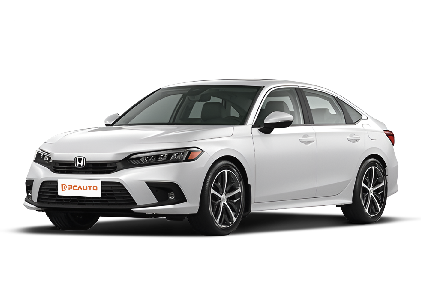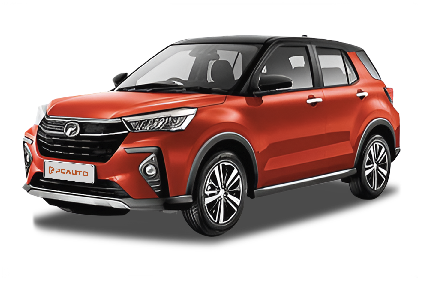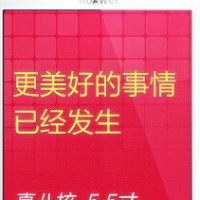Q
Why can't McLaren retain its value?
So, why does McLaren, as a top-tier supercar brand, tend to have lower resale values? Let's break it down. First off, McLaren's production numbers are relatively high compared to some ultra-limited supercars. When there's more supply out there, it naturally puts a damper on used prices. Then you’ve got the hyper-competitive supercar market—new tech and models drop so fast that older versions can quickly get overshadowed by buyers. On top of that, keeping a McLaren on the road isn’t cheap. Maintenance and repair costs are steep, and in places like Malaysia, finding specialized service centers or genuine parts can be a real hassle. That uncertainty makes potential buyers think twice, which in turn pushes used prices down further. And let’s not forget, supercars are a niche market to begin with—smaller audience means they’re more vulnerable when the economy takes a hit.
To be fair, though, this isn’t just a McLaren thing—lots of high-performance cars face similar depreciation issues. If you’re dead set on holding onto one long-term, staying on top of regular maintenance and maybe picking a classic limited edition could help slow the value drop. But hey, for drivers who truly live for the thrill, nothing beats McLaren’s mind-blowing performance and head-turning design—those are priceless.
Special Disclaimer: This content is published by users and does not represent the views or position of PCauto.
Popular Models
Related Q&A
Q
What is the most sold Toyota in 2023?
Looking at global and Malaysian market data for 2023, Toyota's top-selling model is the Corolla Cross. This compact SUV has won over plenty of buyers with its versatility, fuel efficiency, and the tried-and-true reliability Toyota is known for. Here in Malaysia, it's a hit because it blends city-friendly agility with just enough off-road capability to handle local road conditions, making it perfect for family needs.
In Southeast Asia, the Corolla Cross comes in both petrol and hybrid variants, and the hybrid is especially popular. Let's face it, with fuel prices being what they are, Malaysians really appreciate the significant fuel savings hybrids deliver – that's a big selling point.
But Toyota's success in Malaysia isn't just about the Corolla Cross itself. They've got a solid after-sales service network, and their vehicles hold their value well on the used car market – two things that matter a lot to local car buyers. Sure, competitors like the Honda HR-V and Mazda CX-30 are strong contenders, but Toyota stays ahead thanks to the trust people have in the brand and generally lower maintenance costs.
Q
How much is Innova Zenix 2023 in Malaysia?
The 2023 Toyota Innova Zenix comes with varying price tags in Malaysia depending on the trim and specs you go for. The base 2.0X starts at around RM 165,000, while the top-spec 2.0V can set you back roughly RM 180,000. Keep in mind, these prices might dip a bit with dealer promotions or if you opt for extra accessories.
As Toyota's main player in Malaysia's MPV segment, the 2023 Innova Zenix gets some solid upgrades – think a snazzier exterior, nicer interior materials, and better tech. Highlights include a bigger touchscreen, advanced driver-assist systems, and a more efficient 2.0L naturally aspirated engine, striking a good balance between family-friendly comfort and practicality.
Malaysian buyers have long loved the Innova Zenix for its reliability, roomy cabin, and strong resale value. It’s especially popular with big families or folks who hit the road for long drives often. If you’re in the market for an MPV, besides checking the price, it’s worth cross-shopping against rivals like the Honda BR-V or Mitsubishi Xpander to find the one that best fits your needs and wallet.
Q
Who makes the most reliable CVT transmission in 2020?
Back in 2020, Toyota and Honda were widely regarded as two of the top brands when it comes to building reliable CVT transmissions, and they've also got a solid reputation in the Malaysian market. Toyota's Direct Shift-CVT really steps up the game by adding a launch gear, which boosts both durability and responsiveness—perfect for zipping around the city. Honda's CVT, on the other hand, is all about that smooth, seamless ride and great fuel economy, which is why you'll find it in popular models like the City and Jazz. Nissan's Xtronic CVT is no slouch either; it's proven to be pretty steady, especially in models like the X-Trail and Almera where it adapts well to different driving conditions.
CVTs are loved for their continuously variable gear ratios, delivering a super smooth drive and better gas mileage. But here's the thing—unlike traditional automatic gearboxes, they need a bit more TLC. Regularly changing the specific CVT fluid is crucial to prevent overheating issues down the line. For Malaysian buyers looking at CVT-equipped cars, it's smart to check out the brand's reputation and how well the model suits local conditions. And don't skip the manufacturer's maintenance recommendations—sticking to those will go a long way in keeping your CVT reliable for years to come.
Q
What size is the LDV T60 2022?
The 2022 LDV T60 is a mid-size pickup truck, measuring 5365mm in length, 1900mm in width, and 1809mm in height, with a wheelbase of 3155mm. This sizeable footprint translates to a roomy cabin for passengers and a practical cargo bed, making it a solid fit for Malaysian users—whether it's for daily commuting or getting those business deliveries done. With a ground clearance of 215mm, the T60 boasts decent off-road capability, easily handling Malaysia's diverse road conditions, be it smooth city tarmac or those rough and tumble rural tracks. Under the hood, you'll find a 2.0-litre turbocharged diesel engine, which serves up plenty of grunt while keeping fuel consumption in check—perfect for those long drives or when you need to haul a heavy load. For Malaysian buyers, when picking a pickup, size and power are important, but so is durability and a reliable after-sales network. The LDV T60 strikes a good balance in these areas, making it a practical choice worth considering.
Q
How much does the Omoda C9 cost?
Over in Malaysia, the Omoda C9 is starting at around RM108,800, though the exact price can vary a bit depending on the trim level you pick and any ongoing promotions. Your best bet is to hit up your local authorized dealer for the latest figures. As a fresh-faced SUV in the market, the C9 is all about that youthful vibe and tech-forward features. Under the hood, you're looking at a 1.5L turbocharged engine pushing out 147 horsepower, paired with a smart infotainment system and some pretty solid advanced driver assistance features – all in all, it’s shaping up to be a pretty competitive package for the money. If you’re a Malaysian shopper, besides keeping an eye on the sticker price, it’s worth checking out the government’s EEV (Energy Efficient Vehicle) tax incentives. Some models that meet the criteria might score you a nice little tax break. Also, before you sign on the dotted line, do yourself a favor and cross-shop with segment rivals like the Proton X70 or Honda HR-V. Figure out which specs matter most for your needs, and definitely don’t skip booking a test drive to get a real feel for how it handles.
Q
How much is Omoda C9 PHEV in Malaysia?
Omoda hasn't officially announced the price tag for the C9 PHEV in Malaysia just yet. But if we look at where Omoda positions itself in the market and check out the current price range of other plug-in hybrid SUVs in the same class – think Proton X90 or Haval H6 HEV – we're probably looking at a ballpark figure between RM120k to RM150k. Of course, we’ll have to wait for the brand to drop the official numbers to be sure.
Billed as an eco-friendly and tech-forward SUV, the Omoda C9 PHEV is expected to pack a 1.5-liter turbocharged engine paired with an electric motor for its plug-in hybrid setup. Word on the street is it might deliver over 50km of pure electric range, which should be more than enough for daily commutes and help keep those fuel bills in check.
Good news for buyers: Malaysia’s government offers import tax breaks and road tax incentives for PHEV models, so you could save even more when you sign on the dotted line. If this Omoda has caught your eye, your best bet is to keep tabs on Omoda Malaysia’s official channels or swing by an authorized showroom for the latest deets. And hey, it never hurts to cross-shop with other PHEV SUVs in the segment – compare specs, after-sales policies, and all that jazz to make sure you’re getting the ride that fits your needs like a glove.
Q
What is the most scrapped car in 2024?
Industry data for 2024 shows Malaysia's most commonly scrapped vehicles are predominantly aging models over 15 years old – think early 2000s economy cars. These workhorses are hitting the scrapyard mainly due to outdated technology, skyrocketing repair bills, and the country's tightening emissions regulations.
Locally assembled classics like the older Proton Saga and Perodua Kancil top the scrap heap, which makes sense given their massive market penetration back in the day and the natural wear-and-tear from years of faithful service. Adding to the scrap pile: some diesel vehicles and older MPVs that can't keep up with the latest emissions standards as the government ramps up its green initiatives.
For owners, letting go of these old-timers isn't just about avoiding wallet-crushing repair costs. Programs like MARP (Malaysia Automotive Rebate Programme) sweeten the deal with new car subsidies, all while doing your part for the environment. Here's the tip: keep a close eye on your car's condition. When maintenance costs start outweighing what the car's actually worth, it's time to consider upgrading to a newer, more fuel-efficient model. You'll get better safety features and ride the wave of eco-friendly motoring – a win-win.
Q
Which car will be discontinued in 2025?
Looking at today's global shift toward electric mobility, several automakers have already announced plans to phase out certain gasoline-powered models by 2025. Take BMW, for instance—they're set to discontinue current entry-level combustion models like the 1 Series and 2 Series Gran Coupe, making way for a new generation of EVs. Mercedes-Benz has also confirmed it will axe some of its traditional ICE lineups to focus more on the EQ electric range.
But when it comes to the Malaysian market specifically, we’ll need to keep an eye on official announcements from local distributors. Why? Because model refresh cycles can vary quite a bit between regions. Malaysian buyers should pay close attention to changes in national import policies and environmental regulations too—these factors often shape how automakers structure their local product offerings.
If you’re a car enthusiast with your eye on a specific model, the best move is to reach out to your local dealership for the latest updates. And hey, it wouldn’t hurt to stay plugged into advancements in EV tech either—might as well start prepping for your next ride, right?
Q
How many gears does a 2020 Hyundai Kona have?
The transmission specs for the 2020 Hyundai Kona in Malaysia depend heavily on the trim and powertrain you pick. The sporty 1.6L turbo petrol variant comes mated to Hyundai's 7-speed dual-clutch transmission (7DCT), while the 2.0L naturally aspirated model sticks with the tried-and-tested 6-speed automatic (6AT). For those who prefer shifting gears themselves, some base trims might still offer a 6-speed manual (6MT) option.
Now, gear count isn't just a number—more ratios can mean smoother acceleration and better fuel economy. The dual-clutch setup here is snappy and efficient, perfect if you like a more engaging drive with quick shifts. On the flip side, the conventional auto in the 2.0L is all about reliability and low-maintenance peace of mind.
Malaysian buyers should really think about their daily grind too. City driving with constant stop-starts demands different transmission behavior than highway cruising, and Hyundai's Smart Drive Mode lets you toggle between Eco, Normal, or Sport settings to adapt—smart for tailoring responsiveness.
It’s worth noting rivals in this segment, like the Honda HR-V or Toyota C-HR, typically use CVTs or 6ATs too, but each brand tunes their transmissions with distinct characteristics. At the end of the day, nothing beats a test drive to feel which one gels best with your driving style.
Q
What kind of warranty does the 2020 Kona have?
The 2020 Hyundai Kona in Malaysia typically comes with a factory warranty of 5 years or 150,000 km, whichever comes first. This covers major mechanical components like the engine and transmission. The battery pack, on the other hand, gets an exclusive 8-year or 160,000 km warranty. It's worth noting that specific terms might vary slightly between dealerships or due to promotional offers, so it's always a good idea to check with an authorized dealer for the latest warranty details before making your purchase.
Important to remember: wear-and-tear items like brake pads and tires usually aren't covered, and neither is damage caused by improper use or failure to follow the maintenance schedule. That's why sticking to regular servicing at authorized service centers is key to keeping your warranty valid. For the electric variant, the Kona Electric, the high-voltage battery system typically has an even longer warranty – standard industry practice to protect the heart of an EV.
Malaysian buyers should also ask about extended warranty options, which some dealers offer as an add-on. It's something to consider based on your individual driving needs and how long you plan to keep the car.
Latest Q&A
Q
Where is the VIN number on a 2018 Nissan Navara?
The Vehicle Identification Number (VIN) of the 2018 Nissan Navara is typically located in a few common spots. The easiest place to check is the corner of the dashboard below the driver's side front windshield, clearly visible from outside the vehicle through the glass. Additionally, you can find the VIN on a label on the side of the door jamb when you open the driver's door. Some models may also have the VIN engraved on a firewall plaque in the engine compartment or on the frame under the front passenger seat. The VIN is a unique 17-character code consisting of letters and numbers, containing information such as country of origin, manufacturer, and model year. This number is required when processing vehicle transfers, insurance, or repairs in Malaysia. It's advisable for owners to verify the VIN against registration documents or insurance policies to ensure consistency. If rust or stains obscure the VIN, try cleaning the surface or using a flashlight at an angle to identify the engraved characters.
Q
What engine does a 2018 Nissan Navara have?
The 2018 Nissan Navara in the Malaysian market primarily comes with the YD25DDTi 2.5-liter four-cylinder turbocharged diesel engine. This engine features common rail direct injection technology, delivering a robust 190 horsepower and 450 Nm of torque. It's paired with either a 7-speed automatic transmission with manual mode or a 6-speed manual gearbox, balancing off-road capability with everyday driving fuel efficiency. The engine also incorporates a Variable Geometry Turbocharger (VGT), which provides quick response at low RPMs and reduces turbo lag – ideal for Malaysia's hilly terrain and congested city roads.
Notably, the Navara's engine is built with durability in mind, using a cast-iron block and reinforced pistons, making it suitable for long-haul transport or heavy-load needs. It also meets the Euro 4 emission standards commonly adopted in the ASEAN region at the time. For users who frequently need to carry cargo or tow, the diesel engine's high low-end torque is highly practical. Regular diesel filter replacements and using high-quality engine oil are key to maintaining the engine's lifespan.
Rivals in the same segment, like the Toyota Hilux and Mitsubishi Triton, also offer diesel engines of similar displacement, but the Navara's suspension tuning leans more towards comfort, appealing to users who value ride quality.
Q
How much is a 2018 Nissan Navara worth?
The 2018 Nissan Navara typically ranges in price from RM65,000 to RM95,000 in Malaysia's used car market. The exact value depends on factors like condition, mileage, trim level, and service history. Higher-spec VL or V variants, with their added tech and comfort features, tend to sit closer to the upper end, while base models are more budget-friendly. This pickup is known for its reliable 2.5-liter turbo diesel engine and tough chassis, making it well-suited for Malaysia's varied road conditions. It also holds its value steadily in the used market, with above-average retention rates among similar models. Buyers are advised to get a professional inspection to check for major accidents or mechanical issues, compare prices from different sellers, and also look into the remaining factory warranty and regular service records to assess the true condition of the vehicle and ensure it's worth the money.
Q
What series is a 2018 Navara?
The 2018 Navara is part of Nissan's D40 series, a midsize pickup truck rolled out for global markets. In Malaysia, it's known as the NP300 Navara. Under the hood, you'll find a 2.5-liter turbo diesel engine, paired with either manual or automatic transmission options. It's got solid payload capacity and off-road chops, making it a great fit for Malaysia's diverse road conditions. Navara has won over many Malaysian buyers with its durability and practicality, especially standing out in the agricultural and construction sectors. Safety-wise, it doesn't skimp either—coming with ABS, EBD, and dual airbags to keep drivers protected. If you're shopping around for pickups, other strong contenders in the Malaysian market include the Toyota Hilux and Mitsubishi Triton, both boasting solid performance and good reputations. Ultimately, the choice boils down to your personal needs and budget.
Q
What is the fuel tank capacity of the 2018 Nissan Navara?
The 2018 Nissan Navara has an 80-liter fuel tank, a design that meets long-distance driving or heavy-loading needs, making it suitable for Malaysia's diverse road conditions, including city commutes and rural roads. As a pickup truck, the Navara's fuel tank capacity is on par with competitors like the Toyota Hilux or Mitsubishi Triton – models that typically balance fuel economy with range. In Malaysia, the diesel-powered Navara is more popular because diesel engines deliver more torque at low revs, ideal for carrying cargo or towing, while diesel fuel is also relatively more price-advantaged compared to petrol. It's advisable for owners to regularly inspect the fuel tank and fuel system, especially in the hot and humid climate, to prevent moisture buildup or contaminants from affecting fuel efficiency. Additionally, planning refueling times sensibly (like avoiding running the tank too low) can extend the fuel pump's lifespan and ensure driving safety. For further range optimization, consider using factory-recommended fuel additives or regularly maintaining the air filter.
View MoreLatest News

In Malaysia, which sliding door MPVs are available?
MichaelOct 30, 2025

BYD Sealion 7 is not only cheaper than Tesla Model Y, what other differences do they have?
Kevin WongOct 29, 2025

BYD will launch ATTO 2 DM-i in the European market to meet rapidly growing demand
MichaelOct 24, 2025

Chery unveils the T1TP concept car, which can switch to a seven-seat SUV or Double-Cab Pickup
LienOct 24, 2025

XPENG launches its first car equipped with an internal combustion engine, with a combined range of up to 1600km
AshleyOct 24, 2025
View More


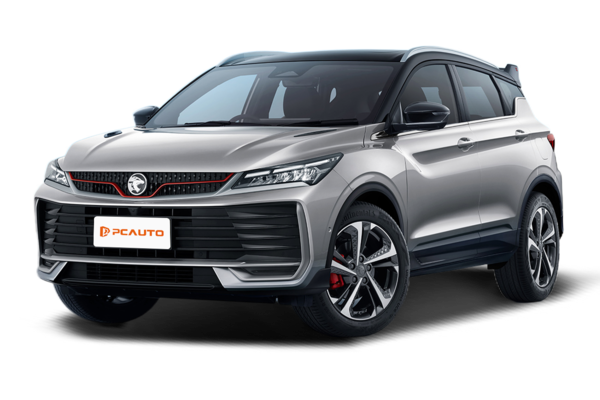
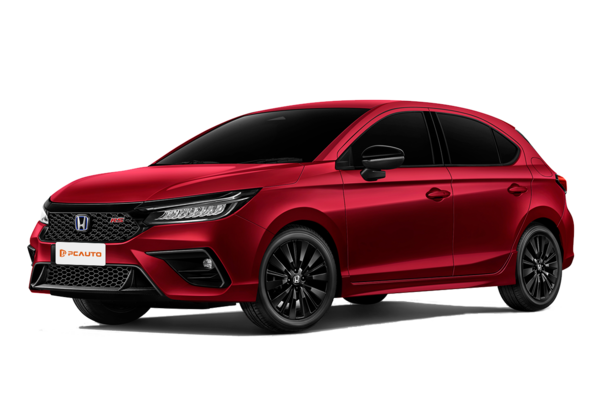
 Cars
Cars